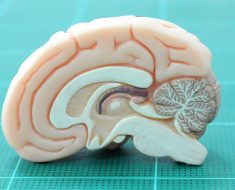However, fibromyalgia and rheumatoid arthritis (RA) are unrelated and have different causes.
While many natural remedies are similar, medical treatments for these conditions are usually different.
In this article, we highlight differences in symptoms and describe the range of home remedies and treatments.
What are the differences?

Fibromyalgia usually causes pain, stiffness, and tenderness in muscles and connective tissues throughout the body. RA tends to cause pain, swelling, and tenderness in certain joints.
Other shared symptoms include:
- pain felt in various parts of the body
- pain mirrored on both sides of the body
- stiffness that is worse in the morning or after long periods of rest
- chronic exhaustion
- reduced mobility and range of motion in muscles and joints
- depression and anxiety
While the effects may be similar, these conditions have different causes.
Fibromyalgia is a chronic neurological condition, which means that it affects the nervous system.
Fibromyalgia changes the way the brain and nervous system process and interpret pain. People with the condition tend to feel amplified pain when they experience everyday injuries, such as strains.
RA is an autoimmune condition. It causes the immune system to harm the synovial tissues, which line the joints. This leads to inflammation and pain.
Over time, RA can cause permanent damage to the bones and connective tissues in the joints. Inflammation may also spread to the lungs, skin, and eyes.
The medical community currently does not believe that fibromyalgia causes inflammation. However, recent research indicates that fibromyalgia may induce a type of inflammation that is not detected by routine blood tests.
No evidence suggests that this inflammation causes joint or muscle damage like RA, and there may be no visible signs.

Symptoms specific to fibromyalgia include:
- pain in the tissues of the torso, thighs, buttocks, arms, back, and the back of the head
- skin that is tender or feels sunburned
- trigger points that may feel like a hard knot and cause radiating pain when touched
- widespread pain that impacts more than one part or half of the body
- gastrointestinal problems, such as diarrhea and constipation
- dizziness and headaches
- problems remembering and thinking clearly, sometimes called “fibro fog”
- very painful menstrual cycles
- restless leg syndrome
- sensitivity to temperatures, sounds, and noises
- symptoms that seem random or are difficult to communicate
Symptoms specific to RA include:
- severe peripheral joint swelling
- pain and tenderness that only impacts the joints
- pain and tenderness felt equally on both sides of the body
- fever
- anemia

Many natural and alternative therapies have been shown to improve symptoms of RA and fibromyalgia. These methods include:
- massage
- chiropractic therapy
- acupuncture
- hydrotherapy
- aromatherapy
- osteopathic therapy
- cognitive behavioral therapy

Outlook
Fibromyalgia and RA cause similar symptoms, such as pain, stiffness, fatigue, and decreased mobility.
A doctor or specialist will differentiate between them after taking a detailed history, ordering tests and scans, and performing a targeted physical examination. Some people may have both conditions.
Fibromyalgia and RA cause chronic pain that can be very difficult to live with. Symptoms can impact a person’s mood and interfere with everyday activities.
Some people with fibromyalgia seem to benefit from prescription medications. People with RA should seek medical treatment as soon as possible, to slow the progression of the disease and prevent joint damage.
Severe fibromyalgia and RA can become disabling. Many people report a lower quality of life, especially during flare-ups of either condition.
However, making changes to lifestyle, using over-the-counter medications, and trying alternative therapies can often reduce symptoms, making both conditions more manageable.
Speak with a doctor if any symptom, including pain, tenderness, swelling, and stiffness, has lasted longer than 3 months or has occurred without an obvious cause.
Source: Read Full Article





